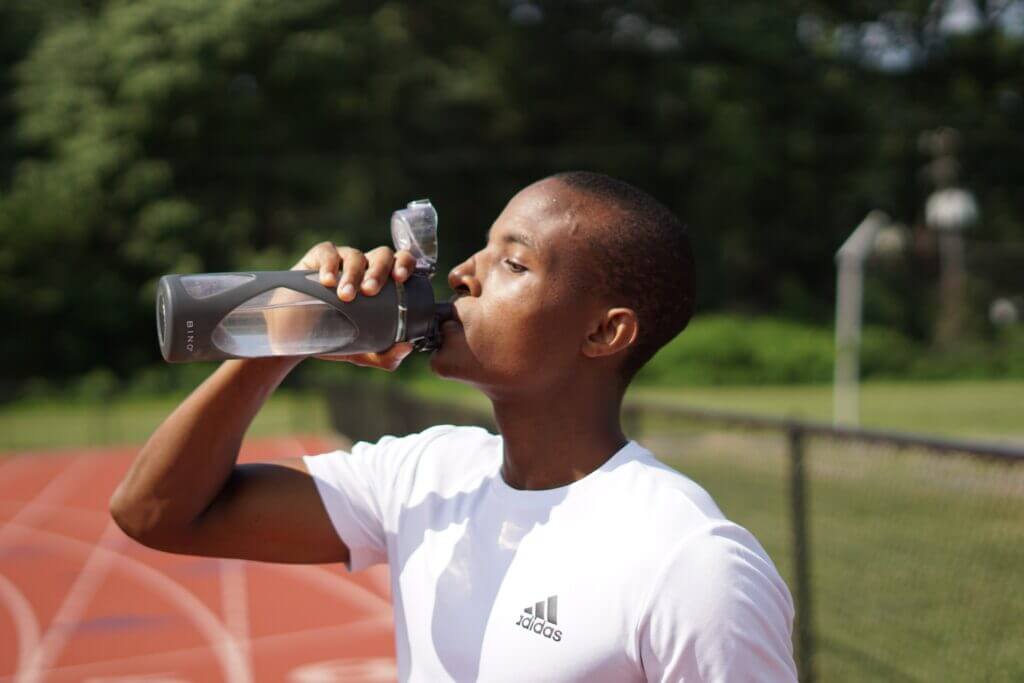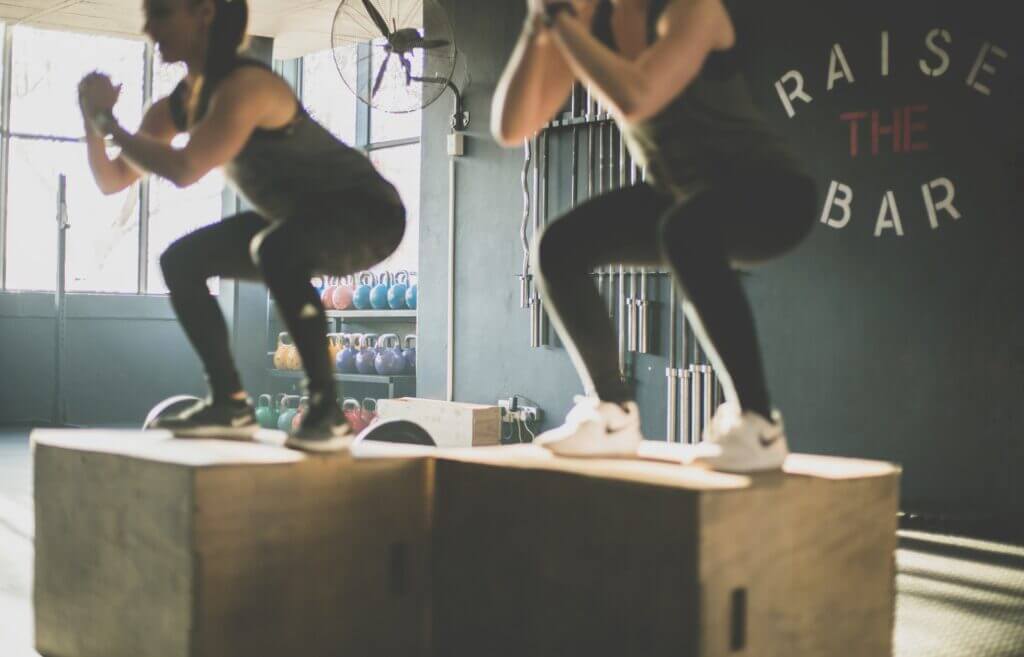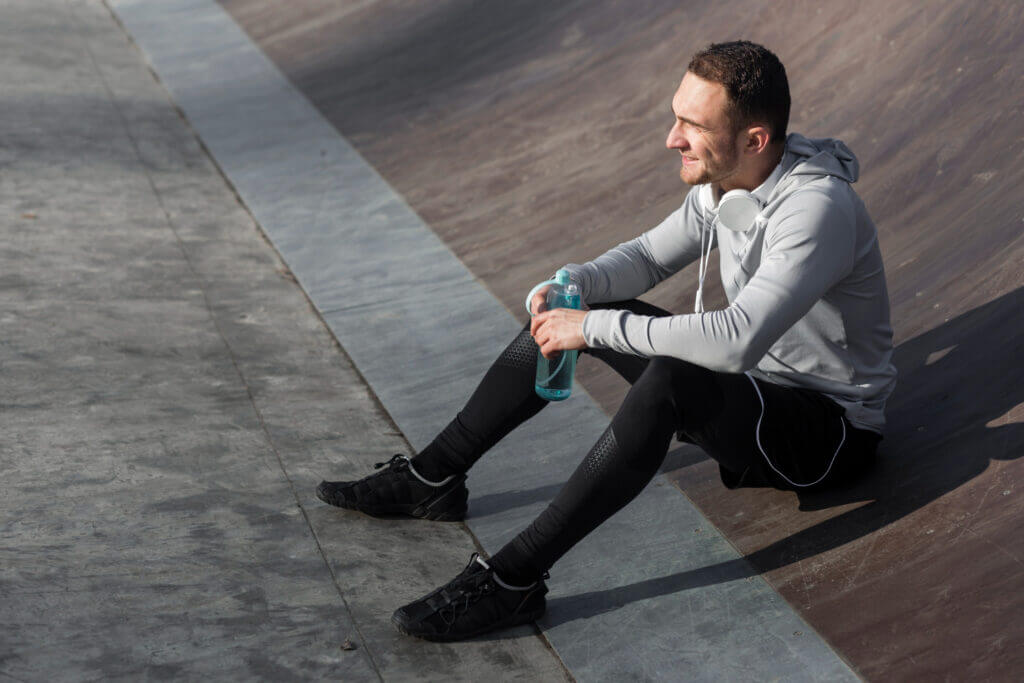Do you love running but often find yourself gasping for air and feeling exhausted after just a few minutes? Or perhaps you’re a seasoned runner looking to improve your endurance and take on new challenges.
Either way, building endurance is essential to achieving your fitness goals and making running a more enjoyable experience. But don’t worry, running longer without getting tired is not an impossible feat!
In fact, with the right techniques and mindset, you can push yourself to run farther than you ever thought possible. So, if you’re ready to learn some practical tips and tricks that will help you run longer and feel stronger, then keep reading!
From breathing and pacing strategies to strength training and mental preparation, we’ll explore all the secrets of endurance running that will take your fitness to the next level. Get ready to lace up your sneakers and hit the pavement with confidence!
Understanding your body
Understanding your body is a crucial step toward becoming a better runner, and it can make a world of difference in your performance. Running is not just about moving your feet; it’s about listening to your body and giving it what it needs to perform at its best.
A. Importance of a proper warm-up

Picture this: You’re standing at the starting line of your next big race. The adrenaline is pumping, your heart is racing, and you’re ready to hit the ground running. But wait – have you done your warm-up? If not, you might want to hit the brakes and take a step back.
A proper warm-up routine is not only important for improving your running performance, but it can also make your pre-run routine more fun and enjoyable. Think of it as a chance to loosen up, get the blood flowing, and prepare yourself for the physical and mental challenge ahead.
But what exactly does a good warm-up routine entail? It starts with some light cardio, like a quick jog or a few jumping jacks, to get your heart rate up and your blood pumping. This is your chance to loosen up and shake off any pre-run jitters.
Next up: dynamic stretching. This type of stretching involves moving your body through a range of motion, which can help to improve flexibility and reduce the risk of injury. You can incorporate lunges, leg swings, and high knees to get those muscles warmed up and ready to go.
Now, it’s time for the fun stuff: drills. Think of these as mini-workouts that will help to activate the muscles you’ll be using during your run. These drills can include butt kicks, skipping, and high knees. Not only do they prepare your body, but they also add a little pep to your step.
Last but not least, it’s time to rev up your engines with some strides or short sprints. This is the perfect opportunity to focus on your form and prepare your body for the faster pace of your run.
B. Understanding your running pace

Running at a consistent pace is one of the keys to running longer without getting tired. Many beginners make the mistake of running too fast at the start, which leads to exhaustion and burnout. To avoid this, it’s important to understand your running pace and find a pace that is comfortable for you. Here are a few tips to help you understand your running pace:
- Warm up properly
Start with a five-minute warm-up to get your blood flowing and your muscles ready for exercise. This can be a light jog, jumping jacks, or a brisk walk. This will also help you ease into your running pace gradually.
- Use a tracker
Use a running app or a fitness tracker to monitor your pace and distance. These tools can help you keep track of your progress and give you an idea of what pace you are comfortable with. You can also use these tools to set goals for yourself and work towards them.
- Listen to your body
Pay attention to your breathing and heart rate while you run. If you feel like you’re breathing too hard or your heart is racing, slow down your pace. On the other hand, if you feel like you’re not challenging yourself enough, pick up your pace gradually.
Understanding your running pace is essential for running longer without getting tired. It takes practice and patience to find the pace that works for you. Be mindful of your body and keep a consistent pace to avoid exhaustion and burnout.
C. Recognizing the symptoms of fatigue

Running can be challenging, especially when you’re trying to increase your endurance. One of the biggest obstacles you might encounter is fatigue. Fatigue can manifest in many different ways and can be caused by various factors, including dehydration, lack of sleep, or insufficient recovery time. Recognizing the signs of fatigue is essential if you want to prevent injury and improve your running performance. Here are some common symptoms of fatigue to look out for:
- Heavy legs — You may feel like your legs are weighed down, making it harder to lift them and move forward.
- Shortness of breath — When you’re fatigued, your breathing may become shallow, making it harder to take in enough oxygen.
- Mental fatigue — You may find it difficult to concentrate, focus, or even think straight. Your decision-making ability may also be affected.
- Slowed pace — As fatigue sets in, you may find yourself slowing down, even though you’re putting in the same amount of effort.
- Increased heart rate — When you’re fatigued, your heart may work harder to pump blood to your muscles, causing your heart rate to increase.
- Muscle soreness — Soreness is a sign that your muscles have been pushed beyond their limits. If you’re experiencing soreness during your run, it may be a sign that you need to take a break.
If you notice any of these symptoms while running, it’s essential to slow down or take a break to prevent injury. Ignoring these signs can lead to more severe issues, such as muscle strains or other injuries. It’s crucial to listen to your body and give it the rest it needs to recover. In the next section, we’ll explore some strategies for building endurance and preventing fatigue during your runs.
Building endurance
Endurance is a crucial element when it comes to running longer distances without getting tired. The following strategies will help you build your endurance and keep you running for longer:
A. Proper diet and hydration

A key factor in building endurance and preventing fatigue during runs is maintaining proper nutrition and hydration. Running for extended periods can deplete your body of essential nutrients and fluids, which can lead to decreased performance and increased risk of injury. Here are some tips to help you maintain proper diet and hydration:
- Eat a balanced diet
A balanced diet rich in carbohydrates, protein, and healthy fats is essential for running long distances. Carbohydrates provide energy to fuel your runs, while protein helps repair muscle tissue and promotes muscle growth. Healthy fats provide energy and help maintain cell function. Be sure to include a variety of fruits, vegetables, whole grains, lean protein, and healthy fats in your diet.
- Hydrate properly
Drinking enough fluids is crucial for maintaining energy levels and preventing dehydration. It’s recommended to drink at least 8-10 cups of water per day, and even more on days when you’re running. Sports drinks can also be beneficial for replacing lost electrolytes during long runs. Be sure to drink fluids before, during, and after your runs to maintain proper hydration.
- Time your meals and snacks
To avoid feeling sluggish during your runs, it’s important to time your meals and snacks properly. Eating a large meal right before a run can lead to discomfort and sluggishness. Instead, try to eat a smaller meal or snack 1-2 hours before your run. This will give your body time to digest and convert the nutrients into energy for your run.
By taking care of your body in these ways, you’ll be better equipped to run longer distances without feeling tired or fatigued.
B. Strength training for runners

Strength training is often overlooked by runners who only focus on running as their main exercise. However, incorporating strength training into your routine can significantly improve your endurance and help prevent injuries. Here are some strength training exercises that can benefit runners:
- Squats
Squats are an excellent exercise to build lower body strength, which is essential for running. They target the quadriceps, hamstrings, and glutes. Start with bodyweight squats and gradually add weights as you progress.
- Lunges
Like squats, lunges also target the lower body muscles. They are particularly effective in strengthening the hip flexors and glutes. Lunges can be done with or without weights.
- Deadlifts
Deadlifts primarily target the hamstrings, but they also work the lower back, glutes, and quads. They are a great exercise to improve overall lower body strength and posture.
- Core exercises
Core strength is crucial for runners as it helps maintain proper running form and prevent injuries. Some effective core exercises for runners include planks, Russian twists, and bicycle crunches.
- Plyometrics
Plyometric exercises are explosive movements that can help improve your running speed and power. Some examples of plyometric exercises include box jumps, jump squats, and jump lunges.
It’s important to note that you should always prioritize proper form and start with lighter weights before gradually increasing the intensity. Consult with a certified personal trainer to design a strength training program that is tailored to your fitness level and running goals.
C. Gradual increase in distance
Running longer distances requires building endurance over time. This means gradually increasing the distance and duration of your runs. Starting with a distance that feels comfortable for you and slowly increasing it every week is a safe way to build endurance without overexerting yourself.
It’s important to remember that progress takes time and pushing yourself too hard too quickly can lead to injury and burnout. Experts recommend increasing your mileage by no more than 10% each week. For example, if you are currently running 10 miles per week, you should aim to increase it to 11 miles the following week, and then 12 miles the week after that.
It’s also important to mix up your running routine. Incorporating shorter runs and interval training can help improve your overall endurance and speed. Adding hills and varied terrain can also help improve your overall fitness and prevent boredom in your running routine.
By gradually increasing your distance and mixing up your routine, you will find that you can run longer without feeling tired. Remember to always listen to your body, and take rest days when needed to avoid burnout and injury.
Mental strategies for running longer
Running is not just a physical activity, it also involves mental strength. In order to run longer without getting tired, you need to have the right mindset. Here are some mental strategies that can help you achieve this:
A. Focusing on breathing

One of the key factors in running longer without getting tired is learning how to regulate your breathing. When you run, your body requires more oxygen to keep your muscles fueled and working efficiently. If you’re not breathing correctly, you could find yourself feeling tired and out of breath in no time. Here are some tips for focusing on your breathing while you run:
- Practice rhythmic breathing
One technique for regulating your breathing is rhythmic breathing. This involves taking a certain number of steps while breathing in, and then taking the same number of steps while breathing out. For example, you could try inhaling for three steps, then exhaling for three steps. Experiment with different rhythms until you find one that feels comfortable for you.
- Breathe from your diaphragm
Another way to improve your breathing while running is to breathe from your diaphragm. This means inhaling deeply and allowing your stomach to expand, rather than taking shallow breaths from your chest. By breathing deeply and fully, you’ll be able to take in more oxygen with each breath.
- Use visualization techniques
Sometimes, the mental aspect of running can be just as challenging as the physical. When you start to feel tired and out of breath, try using visualization techniques to stay focused and calm. One technique is to imagine yourself breathing in the clean, fresh air and exhaling any tension or fatigue. Another is to visualize yourself running effortlessly and feeling strong and energized.
By focusing on your breathing and practicing these techniques, you’ll be able to maintain a steady rhythm and run longer without getting tired. Don’t forget to take deep breaths, keep your posture upright, and stay relaxed to make the most out of your run.
B. Setting achievable goals
One of the most important mental strategies for running longer is to set achievable goals. Whether you are a beginner or an experienced runner, setting goals can help you stay motivated and focused during your runs. However, it’s important to set goals that are realistic and attainable. Here are some tips for setting achievable goals:
- Start small
If you’re just starting, it’s important to set small, attainable goals. For example, you might start with a goal of running for five minutes without stopping. As you become more comfortable with that distance, you can gradually increase your goal.
- Be specific
Make your goals as specific as possible. Instead of simply setting a goal to “run longer,” try setting a goal to run a specific distance, such as a 5K or a half marathon.
- Make it measurable
It’s important to be able to measure your progress toward your goals. For example, if your goal is to run a 5K, you might set a goal to complete the distance in a certain amount of time.
- Set a deadline
Setting a deadline can help you stay motivated and focused. For example, you might set a goal to run a 10K race in three months.
- Celebrate your progress
Celebrate your achievements along the way. When you reach a goal, take a moment to acknowledge your hard work and celebrate your progress.
By setting achievable goals, you can stay motivated and focused on your running, which can help you run longer without getting tired. Remember to start small, be specific, make it measurable, set a deadline, and celebrate your progress along the way.
C. Visualizing success
Visualization is a powerful tool that can help you overcome mental barriers. Before your run, visualize yourself running smoothly and effortlessly.
Imagine yourself finishing your run feeling strong and accomplished. This positive visualization can help you stay motivated and focused during your run, and can also help you overcome any negative thoughts or doubts that may arise.
Techniques for running efficiently
Running efficiently can help you run longer without getting tired. Proper running form, choosing the right shoes, and breathing techniques are all important factors to consider.
A. Proper Running Form

Running with proper form can reduce the risk of injuries and increase efficiency. Here are some tips for proper running form:
- Keep your shoulders relaxed and down
- Engage your core muscles
- Lean forward slightly from your ankles, not your waist
- Keep your arms bent at a 90-degree angle and swing them forward and back, not across your body
- Land on the mid-foot, not the heel or toes
- Take short, quick steps instead of long strides
If you want to learn more on the subject of running form, you can read the following article: 5 Signs of Bad Running Form and How to Fix Them.
B. Choosing the Right Shoes

Wearing the right shoes can make a huge difference in your running performance. The shoes you choose should fit well and be comfortable to wear. Factors to consider when choosing running shoes include:
- Arch support
- Cushioning
- Heel drop
- Breathability
- Traction
C. Breathing Techniques
Proper breathing techniques can help you run longer without getting tired. Here are some tips for efficient breathing:
- Breathe through your mouth and nose
- Inhale deeply and exhale slowly
- Use a breathing pattern, such as inhaling for three steps and exhaling for two
- Avoid shallow breathing by expanding your belly as you inhale
By incorporating these techniques into your running routine, you can increase your efficiency and reduce the risk of injury, while also improving your endurance. Remember, running is a journey, and it takes time and practices to build up your endurance. So, be patient, stay consistent, and enjoy the benefits of running for both your physical and mental health.
Recovering effectively
Running longer distances can be taxing on your body, which is why it’s essential to give your body enough time to recover. Here are some recovery strategies to help you get back on your feet quickly.
A. Importance of rest days

Rest days are an essential part of any training regimen, especially for runners. When we exercise, we create small tears in our muscles, and during rest, the body repairs and strengthens them. Rest days help to prevent overuse injuries, such as stress fractures, muscle strains, and joint pain, which can sideline a runner for weeks or months.
Taking a rest day doesn’t mean you have to completely stop moving. You can engage in low-impact activities, such as yoga, cycling, or swimming, which help to increase blood flow, reduce inflammation, and promote recovery. These activities can also help to maintain cardiovascular fitness without putting additional stress on the body.
Rest days are not only beneficial for physical recovery but also for mental recovery. Running can be a mentally challenging activity, and taking a day off can help to reduce stress and improve mental health. It can also help to prevent burnout and maintain motivation for future runs.
B. Stretching and foam rolling

Stretching and foam rolling are essential recovery techniques that help reduce muscle tension and soreness after a run. These techniques can help increase blood flow to the muscles and reduce the risk of injury.
Stretching:
Static stretching is the most common form of stretching and involves holding a stretch for 10-30 seconds. Dynamic stretching involves movement and is more effective before a run. It is essential to focus on the major muscle groups used in running, such as the calves, hamstrings, quads, and hip flexors. Here are some stretches that can help:
- Standing calf stretch: Stand facing a wall and place your hands on the wall at shoulder height. Step back with one leg, keeping the heel on the ground, and the knee straight. Lean forward to stretch the calf. Hold for 10-30 seconds, and then switch legs.
- Hamstring stretch: Sit on the ground with your legs straight out in front of you. Reach forward and try to touch your toes. Hold for 10-30 seconds.
- Quadriceps stretch: Stand with one hand on a wall for balance. Bend your knee and grab your ankle with your other hand. Pull your heel towards your buttocks to stretch your quadriceps. Hold for 10-30 seconds and then switch legs.
Foam Rolling:

Foam rolling is a self-massage technique that helps release muscle knots and improve flexibility. Foam rolling works by applying pressure to the muscles and fascia, helping to break up adhesions and promote blood flow. Here are some foam rolling exercises that can help:
- Calves: Sit on the floor with a foam roller under your calves. Cross one leg over the other and roll up and down the calf. Spend 30-60 seconds on each leg.
- IT band: Lie on your side with a foam roller under your hip. Roll down to your knee and then back up to your hip. Spend 30-60 seconds on each side.
- Upper back: Lie on your back with a foam roller under your upper back. Roll up and down from the base of your neck to your mid-back. Spend 1-2 minutes on this exercise.
In conclusion, stretching and foam rolling are essential recovery techniques that can help reduce muscle tension and soreness after a run. Incorporating these techniques into your post-run routine can help improve your running performance and reduce the risk of injury.
C. Cross-training

Another way to supplement your running routine and recover more quickly is by incorporating different exercises into your workout, which is commonly known as cross-training. Cross-training refers to any exercise that complements your main workout, such as swimming, cycling, or weightlifting. This type of training can offer several benefits to runners, including injury prevention, building strength and endurance, and improving overall fitness levels.
One benefit of cross-training is that it allows you to work different muscle groups that you may not use as much during running. For example, swimming engages your upper body and core, which can help build overall strength and improve your posture. Weightlifting can also help you build muscle and improve your bone density, which can help you run faster and longer with less risk of injury.
In addition, cross-training can give you a break from the repetitive motions of running, which can help prevent overuse injuries. It also provides a mental break from the monotony of running, which can help you stay motivated and focused.
When incorporating cross-training into your routine, it’s important to choose activities that are low-impact and won’t put too much strain on your joints. Swimming, cycling, yoga, and Pilates are all great options. You should also aim to cross-train at least once or twice a week, depending on your fitness level and running goals.
Conclusion
In conclusion, running is an excellent way to improve your physical and mental health. While it can be challenging to run longer without getting tired, there are several strategies you can use to build endurance and run more efficiently.
By understanding your body, building endurance, using mental strategies, and recovering effectively, you can become a better and more confident runner. Remember to start slow, be patient with yourself, and stay consistent with your training.
With dedication and hard work, you can achieve your running goals and enjoy the many benefits that running has to offer. So, put on your running shoes and hit the pavement – the journey towards better health and fitness starts today!


